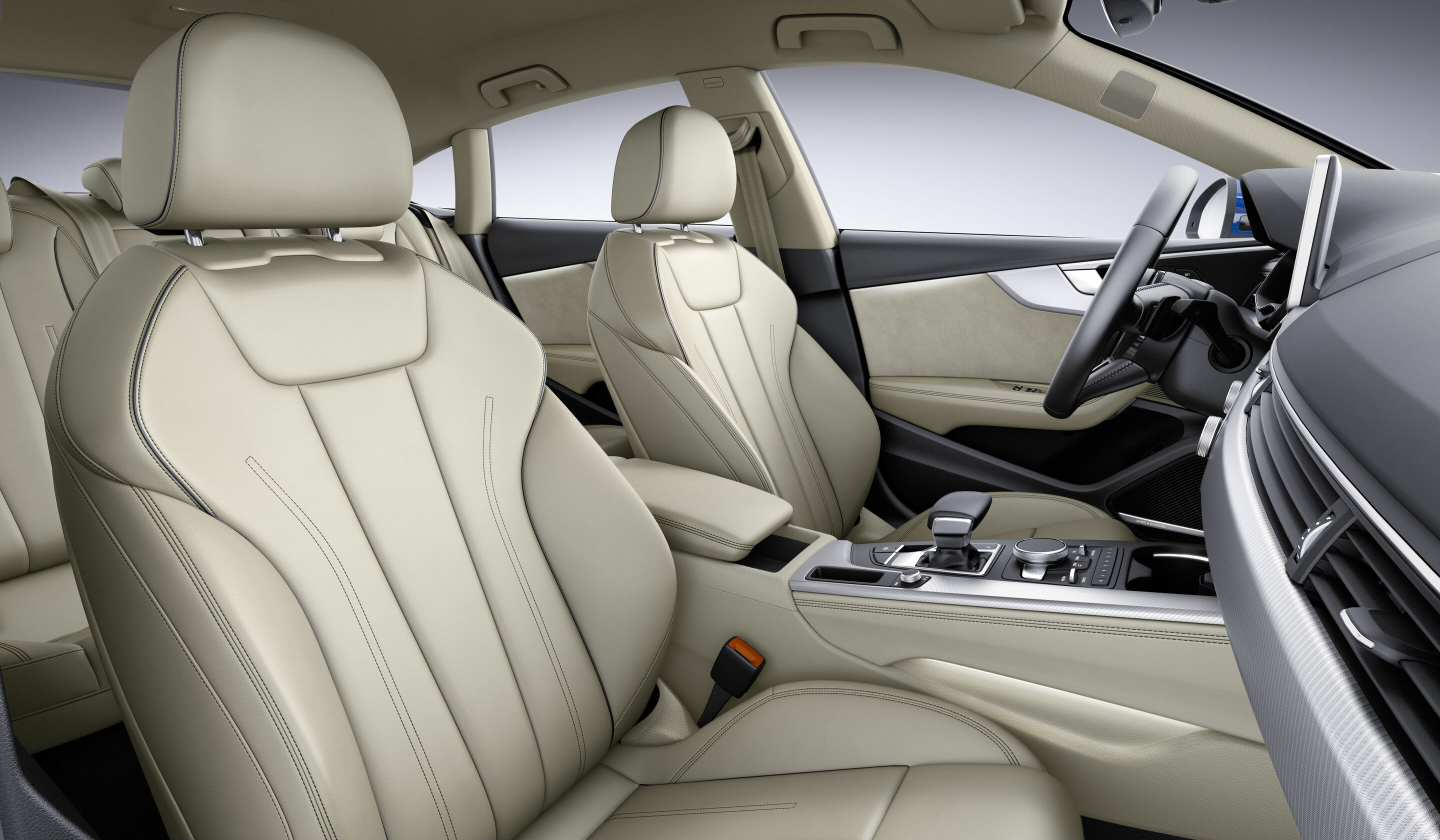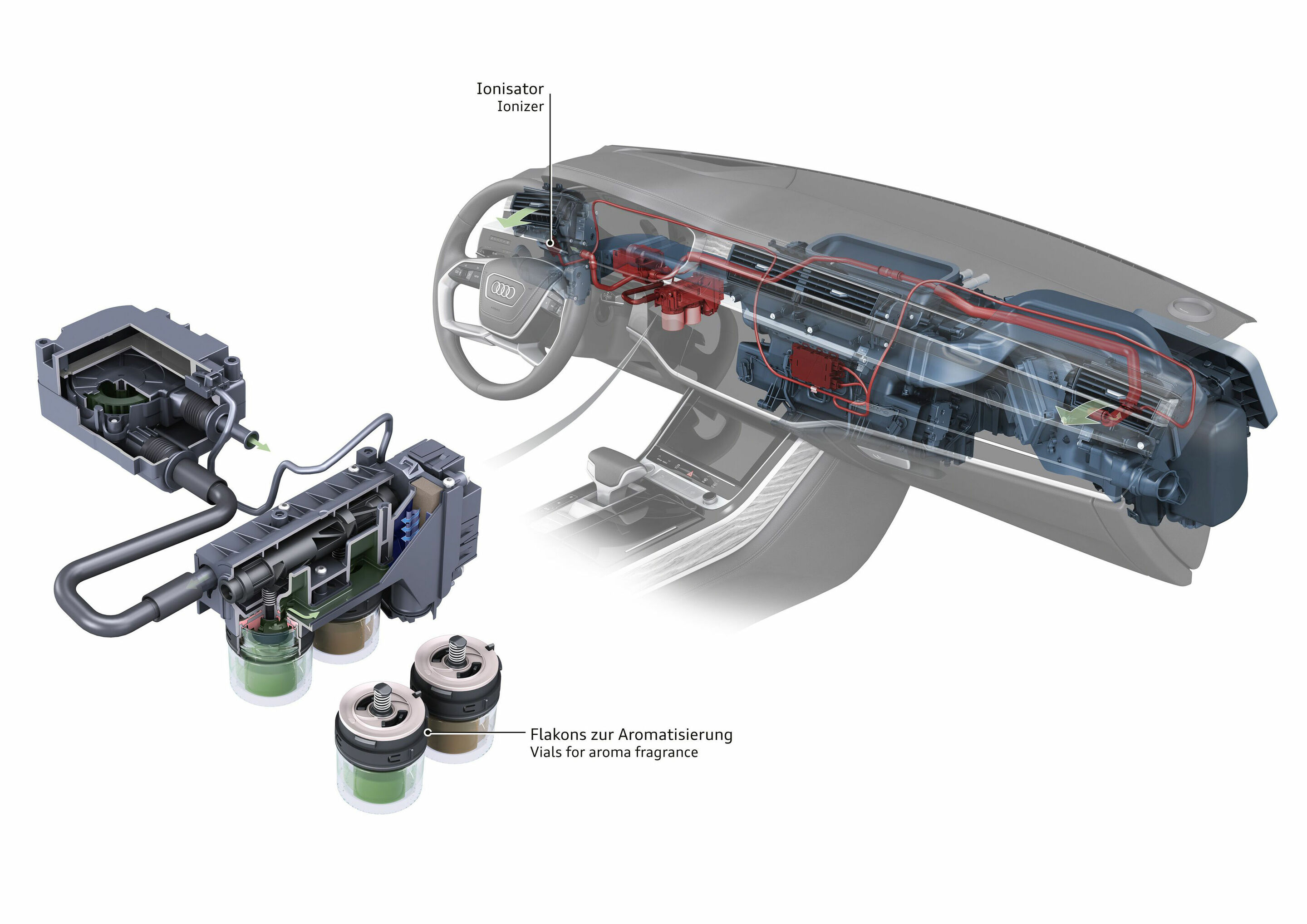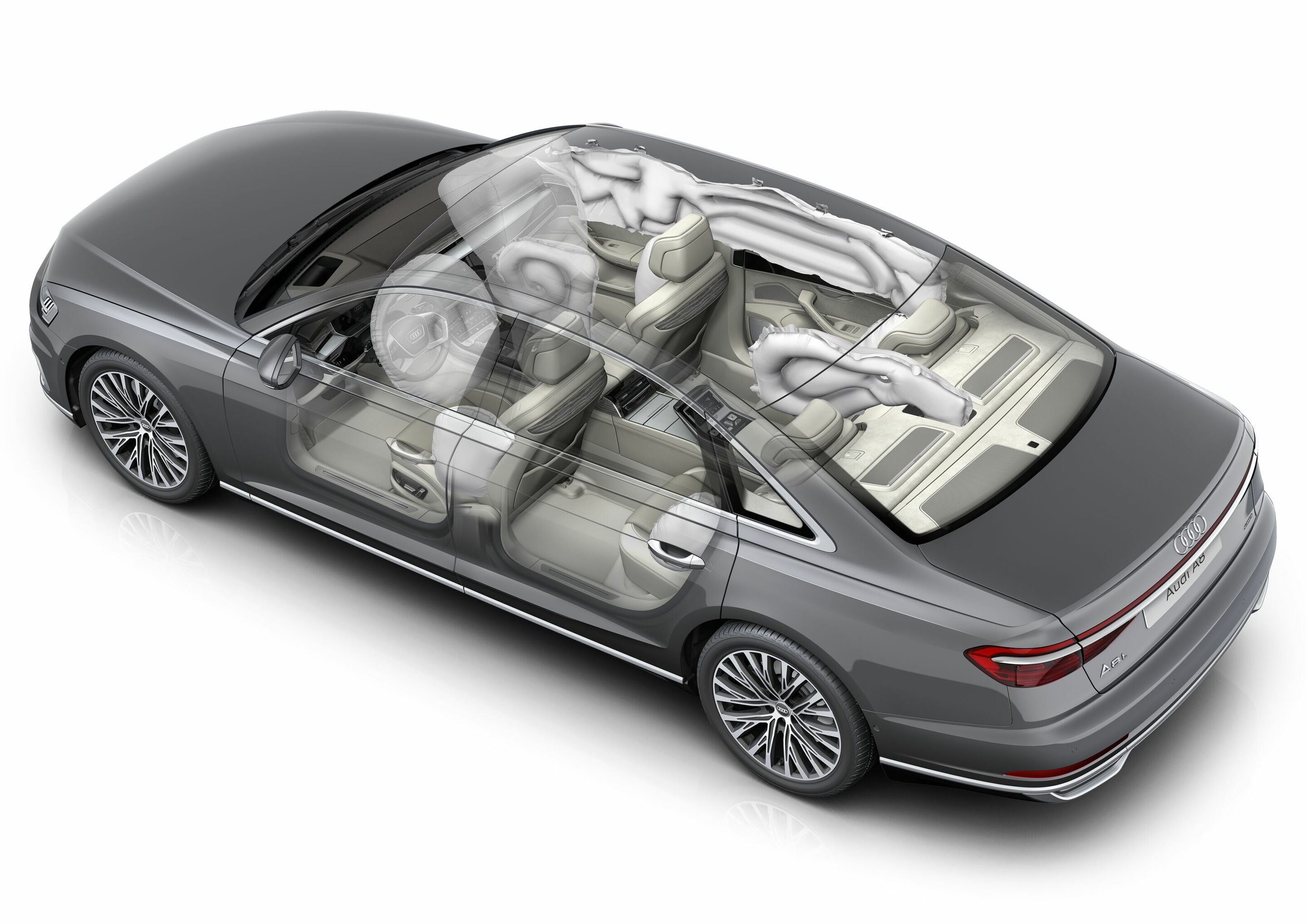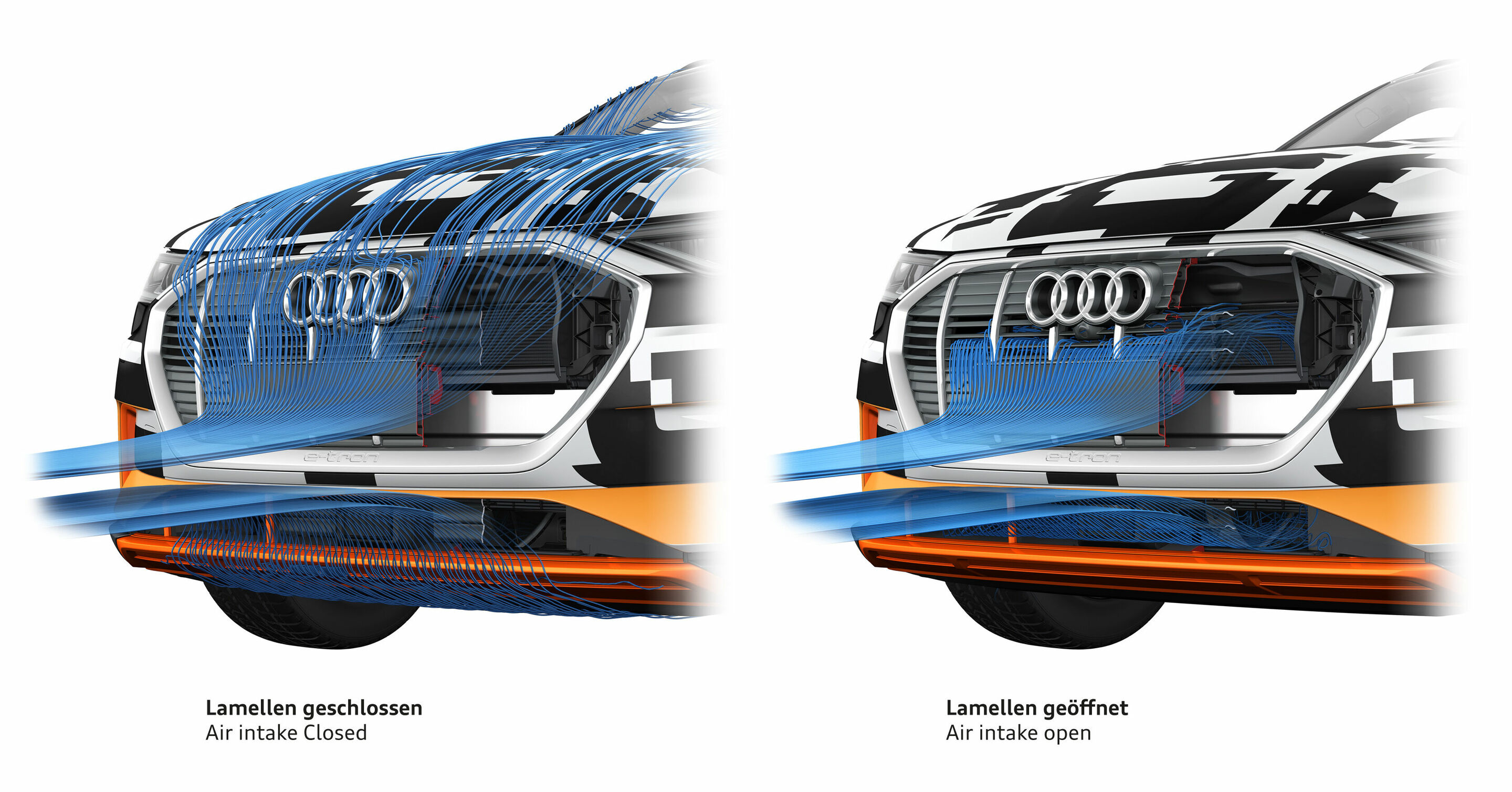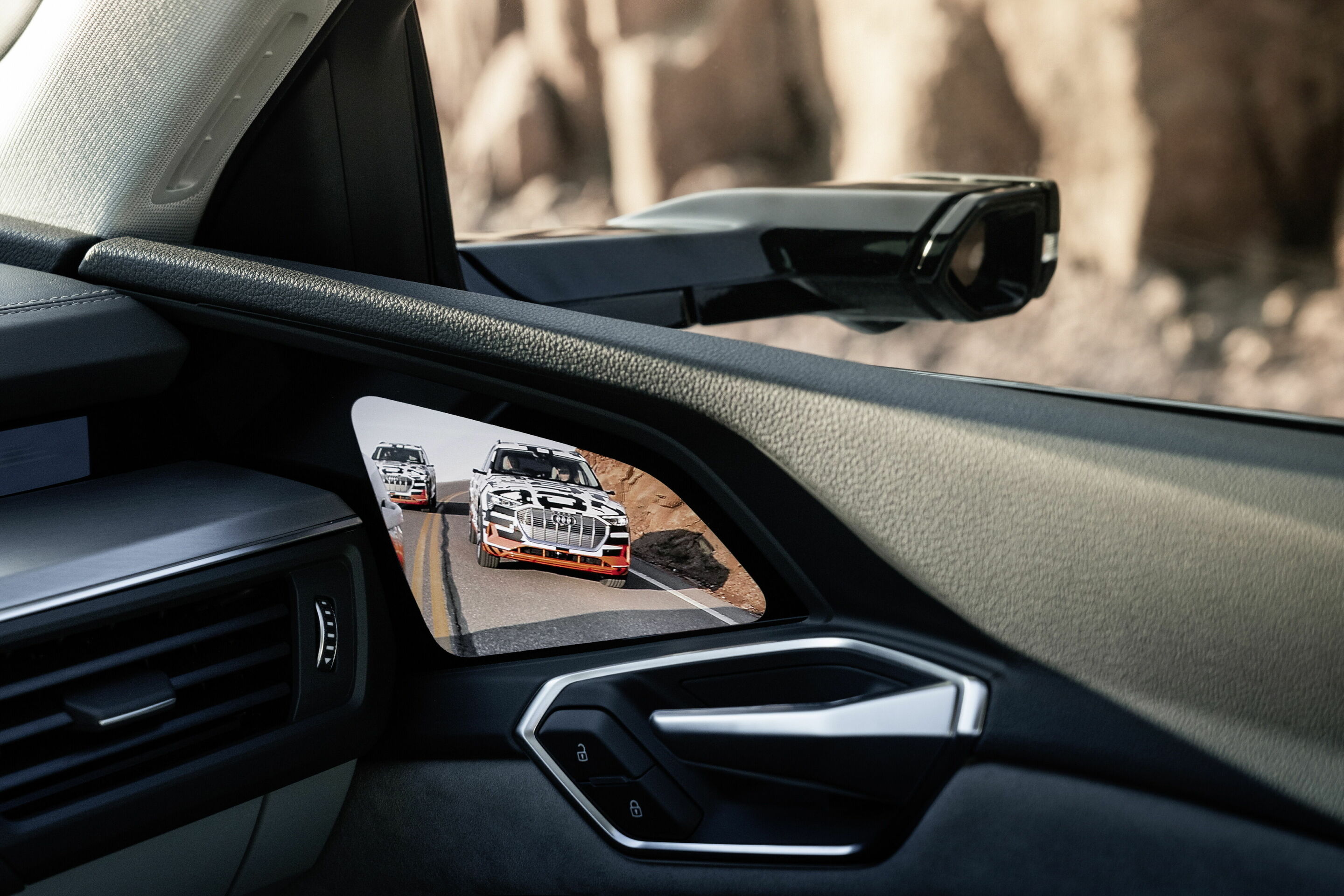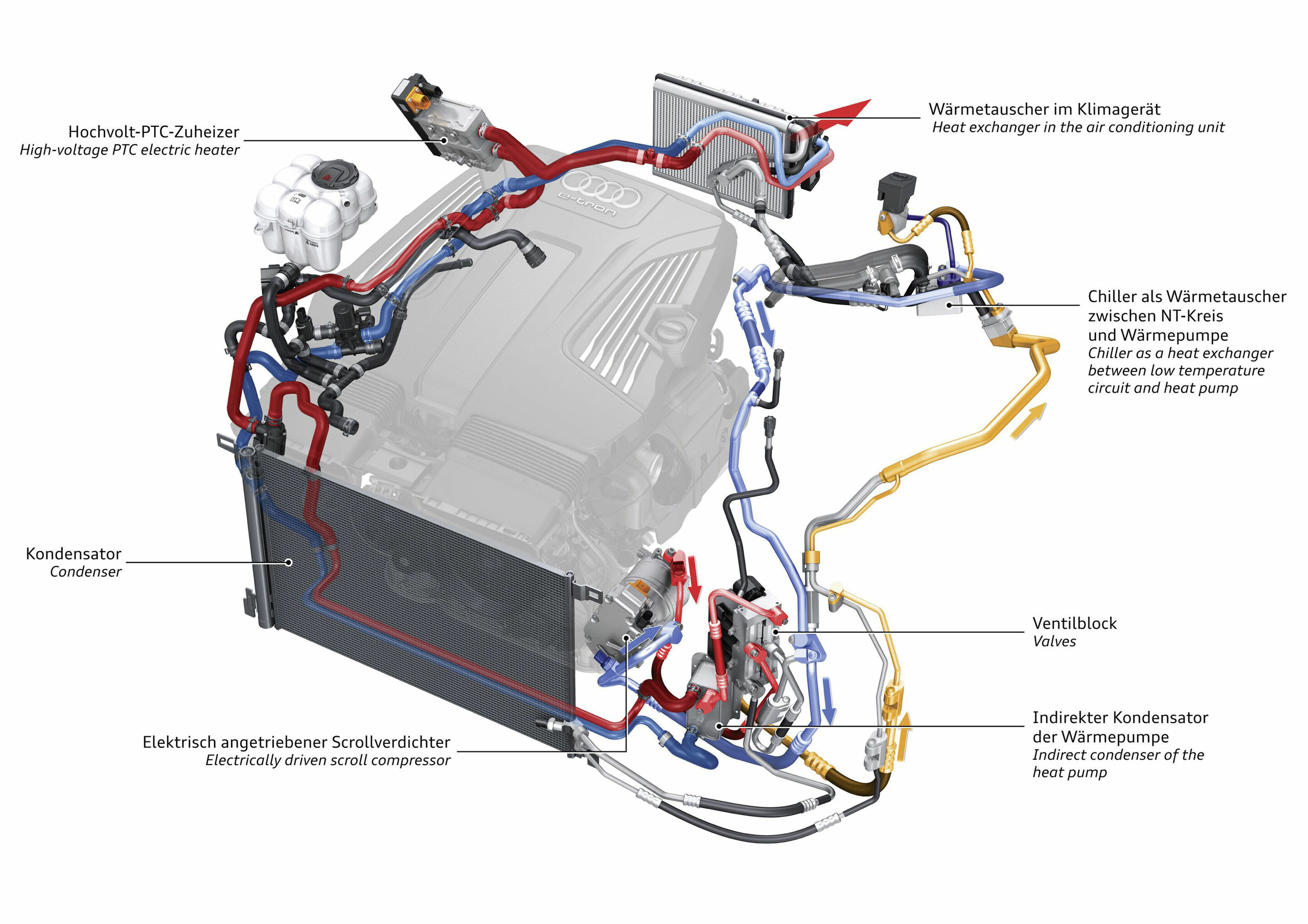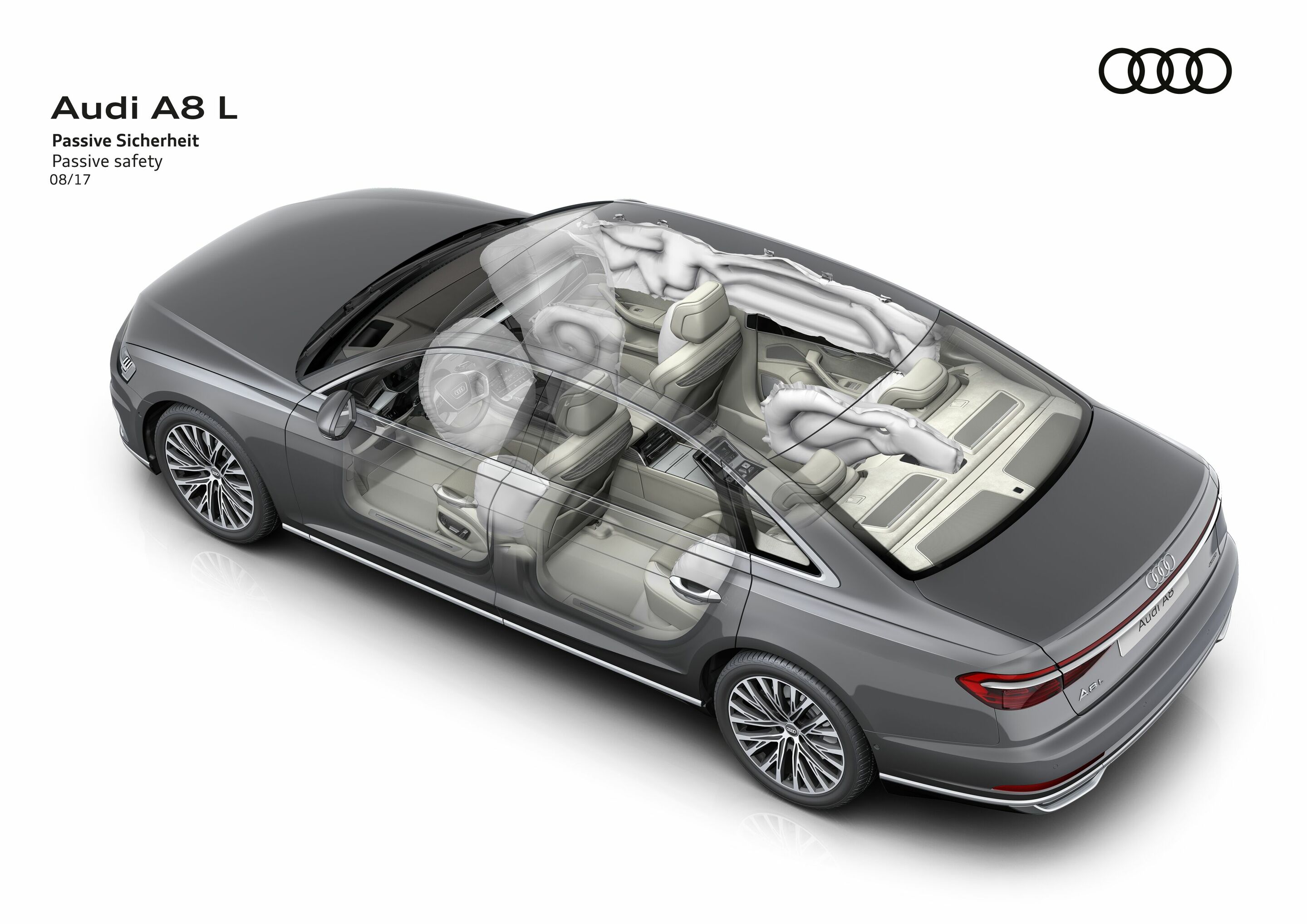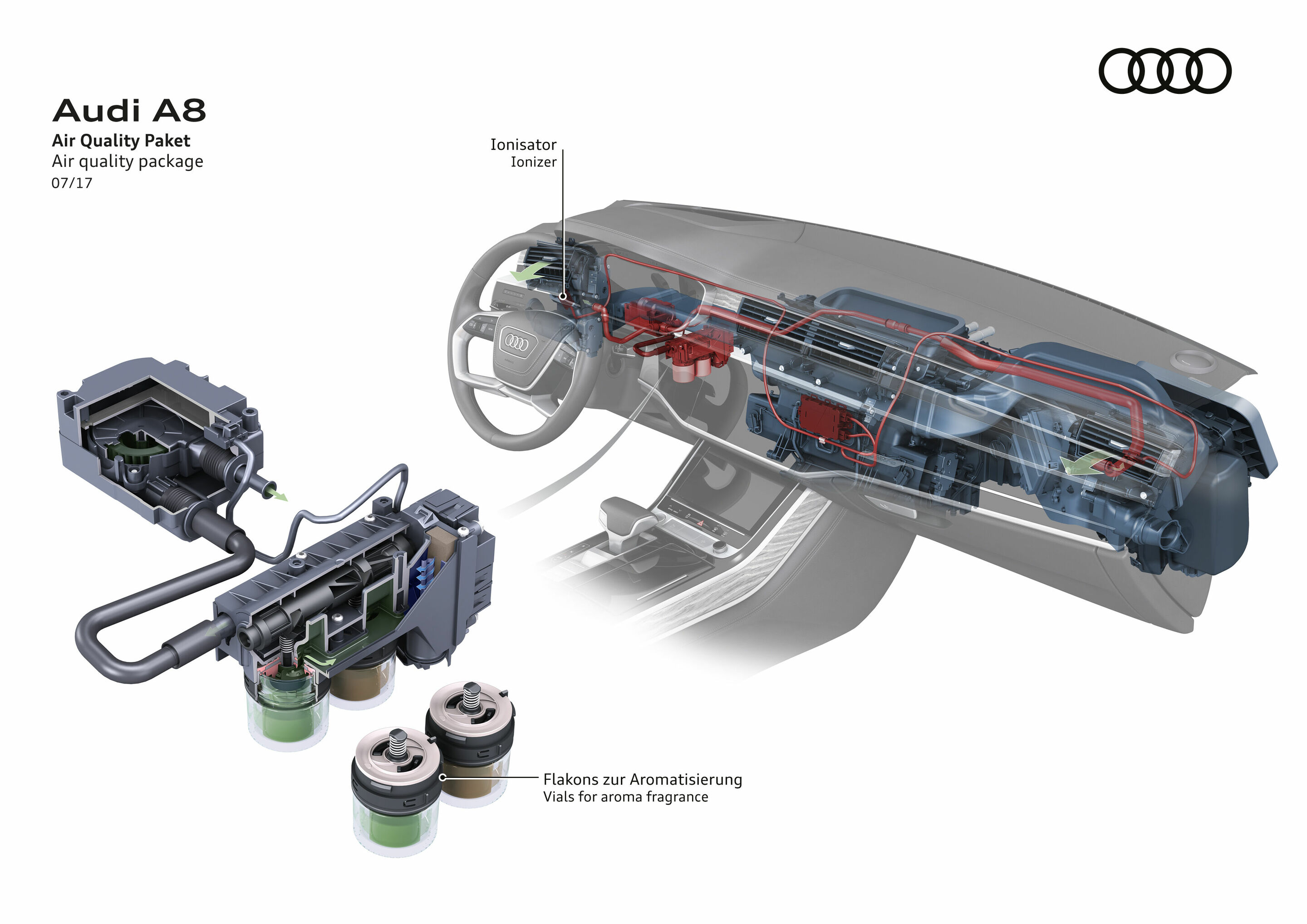Interiors
Back to overviewThe driver and passengers should feel completely at ease on board their Audi. This is ensured with sophisticated comfort and safety equipment, including special air conditioning filters and additional airbags.
Air quality package
The air quality package takes interior air quality to a whole new level. Two ionizers charge the air molecules electrically with negative ions. These anions attract dust particles so that they form mini clusters that fall to the floor and so are not inhaled. The combination filter in the four-zone automatic air conditioning binds a majority of the gases and particulates. It also renders allergens and microorganisms harmless.
Fragrancing provides for a subtle, pleasant smell by adding slight amounts of an olfactory agent to the air flow from the air conditioning system. The instrument panel conceals two vials of highly concentrated oil evoking optional a hint of sea breeze or mountain air. The high quality of the fragrances is due in part to their above-average content of natural substances (15 and 18 percent, respectively). Customers can adjust the fragrancing intensity in four levels. The vials are replaced during servicing. The fragrances are stable even in extreme heat or cold, and are entirely safe for people, animals and materials.
The air quality package will be introduced to selected markets in 2018 and expanded to include a particulate measuring sensor. It determines the level of particulates in the ambient air and compares this reading with the interior air. Filter efficiency is displayed on the on-board monitor – an important service especially for customers in urban areas.
Center airbags
Center airbags are located between the seats and offer additional protection in the event of a side-impact collision. The airbags inflate within a fraction of a second. To ensure their effectiveness even in the event of multiple collisions or a rollover, the airbags are sealed and retain their internal pressure over an extended period.
The front center airbag is located in the driver’s seat on the side facing the center console. Similar to a head-thorax airbag, the cover tears along special seams to release the airbag in the event of a collision. The rear center airbag deploys from the rear shelf. It has a high-quality Alcantara cap that tears in the event of crash to release the airbag.
Controllable cool-air intake
The controllable cool-air intake consists of a frame behind the Singleframe with two electric louvers that can be operated independently of each other. At average speeds, they stay shut for as long as possible to prevent disrupting the airstream. In certain situations – such as when the ancillaries require cooling air or the brakes are subject to high loads – they are opened independently of each other.
Virtual exterior mirrors
Virtual exterior mirrors are making their production-model debut in the Audi e-tron. Their flat support incorporates a small camera with a resolution of 1,280 x 1,080 pixels at its hexagonal end. Image brightness is adjusted automatically for the ambient conditions, such as when driving through a tunnel. A heating function protects the camera from misting over or freezing. Each support also incorporates an LED indicator and optionally a TopView camera. Compared with standard mirrors, the virtual exterior mirrors reduce the width of the Audi e-tron by 15 centimeters (5.9 in). They can be folded manually like conventional exterior mirrors.
Inside the car, the camera’s processed images are displayed on high-contrast OLED displays (OLED = organic light-emitting diodes). These have a diagonal of 7 inches, a resolution of 1,280 x 800 pixels, automatic brightness adjustment and proximity sensor technology. If the driver moves their finger toward the surface, symbols are activated with which the driver can reposition the image. A switching function allows the driver to also adjust the virtual passenger-side mirror.
Thanks to the sophisticated image processing, the displays provide a significantly better image than a conventional mirror in certain situations, such as in direct sunlight. The mirrors adjust automatically to three driving situations: highway, turning and parking. The highway view appears when the driver is traveling above 90 km/h (55.9 mph) and the navigation data reports that vehicle is on the highway. The field of vision is reduced so that the driver can better estimate speeds when driving fast – other vehicles then appear larger in the display. If the driver signals an intention to turn or change lanes by indicating, the indicator view extends the image detail on the relevant side. This reduces the blind spot. If the driver selects reverse, the curb view improves visibility for maneuvering and parking. The image is extended downward – similar to the automatic lowering function with a conventional exterior mirror. The display visualizes the turn signal as a green contour on its outer frame and also displays notifications from the Audi side assist lane-change assistant and the exit warning.
Heat pump
In the Audi Q7 e-tron quattro a heat pump with an electric compressor is responsible for heating and cooling. In 2015 Audi became the first premium manufacturer to use this technology in a production plug-in hybrid model. To bring the interior to the desired temperature, the heat pump’s cooling loop collects the thermal losses emitted by the electric powertrain’s high-voltage components. The heat pump is extremely efficient, producing up to three kilowatts of thermal output from just one kilowatt of electric power. It extends the electric range compared to a vehicle with a purely electric heating system.
